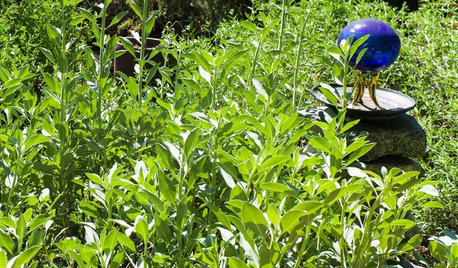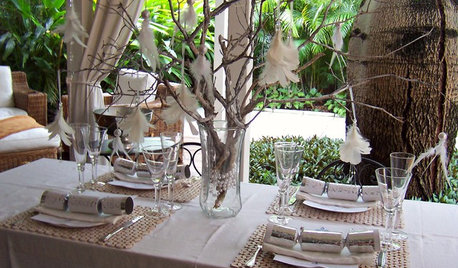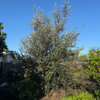Huanglongbing (Citrus Greening) in Los Angeles
pennypond USDA 10 Sunset 21 CA
12 years ago
Related Stories

VINTAGE STYLEHouzz Tour: Farmhouse Meets Victorian in Los Angeles
Fanciful scrolls and sweet botanical prints join playful vintage touches for a home that’s altogether charming
Full Story
HOUZZ TOURSMy Houzz: Groovy 1970s Retro Pad in Los Angeles
Tune in to a dazzling kaleidoscope of colors, collectibles and vintage furnishings in this lovingly curated, mod California home
Full Story
COMMUNITYIn L.A.’s Echo Park, a New Urban Development Takes Flight
Blackbirds, a new ‘microneighborhood’ near downtown, is Los Angeles’ latest small-lot urban infill project
Full Story
WHITE KITCHENSKitchen of the Week: Splashes of Color and Country Charm
An all-white spec-house kitchen in Los Angeles goes a little bit country and gets a whole lot of fun
Full Story
COLOROpposites Attract: Complementary Color Combos
Use the power couples of the color wheel — blue and orange, purple and yellow, red and green — to spice up any decor scheme
Full Story
FLOWERS AND PLANTSWhite Sage Shimmers in the Water-Wise Garden
California native Salvia Apiana features silvery-green foliage and seasonal flowers that bees, hummingbirds and butterflies love
Full Story
TURQUOISEColor Guide: How to Work With Turquoise
The cheeriest blue in the spectrum, turquoise stands strong on its own and plays well with others
Full Story
DESIGNER SHOWCASESUnderstated Elegance at the 2016 Pasadena Showcase House of Design
Southern California designers put their signature touches on rooms in a Mission Revival show house
Full Story
SAVING WATERHouzz Call: Are You Letting Go of Your Lawn?
Many facing a drought are swapping turf for less thirsty plantings. If you’re one of them, we’d like to hear about it
Full Story
HOLIDAYSHave a Festive, Sun-Drenched White Christmas
If you live in a warm climate, you can still celebrate the holiday with dazzling decor. Here are 6 ways to make things merry and bright
Full Story






hoosierquilt USDA 10A Sunset 23 Vista CA
socks
Related Professionals
Camas Landscape Architects & Landscape Designers · Barrington Landscape Contractors · Elmhurst Landscape Contractors · Mason Landscape Contractors · National City Landscape Contractors · Santa Maria Landscape Contractors · West Haverstraw Landscape Contractors · Raytown Landscape Contractors · Rowlett Swimming Pool Builders · Summerlin South Swimming Pool Builders · Bay Village Window Contractors · Central Islip Window Contractors · Fishers Window Contractors · Lake Arrowhead Window Contractors · Lauderhill Window Contractorshoosierquilt USDA 10A Sunset 23 Vista CA
socal23
pennypond USDA 10 Sunset 21 CAOriginal Author
hoosierquilt USDA 10A Sunset 23 Vista CA
dicot
yukkuri_kame
socks
hoosierquilt USDA 10A Sunset 23 Vista CA
socks
hoosierquilt USDA 10A Sunset 23 Vista CA
applenut_gw